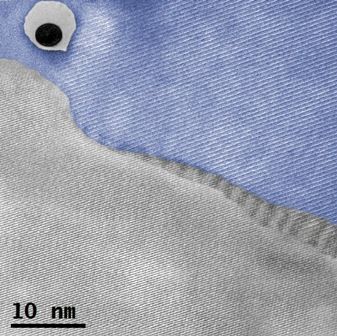We have a new partner: the nanowhale! It appeared in an Indium Tin-doped Oxide (ITO) sample deposited by Oblique Angle with Xenon ions at α= 50°. In this image (colorized for artistic purpose) recorded using the HRSTEM-HAADF imaging technique in a FEI Titan3 Themis 60-300 microscope at 200 kV, two ITO crystalline grains with different orientation are observed which generate a grain boundary. The teeth of the whale are the result of a Moire effect, while the whale’s eye is due to a hole that was made in the sample with the probe of the microscope in order to obtain a good reference for the drift correction in an EDX elemental mapping.

